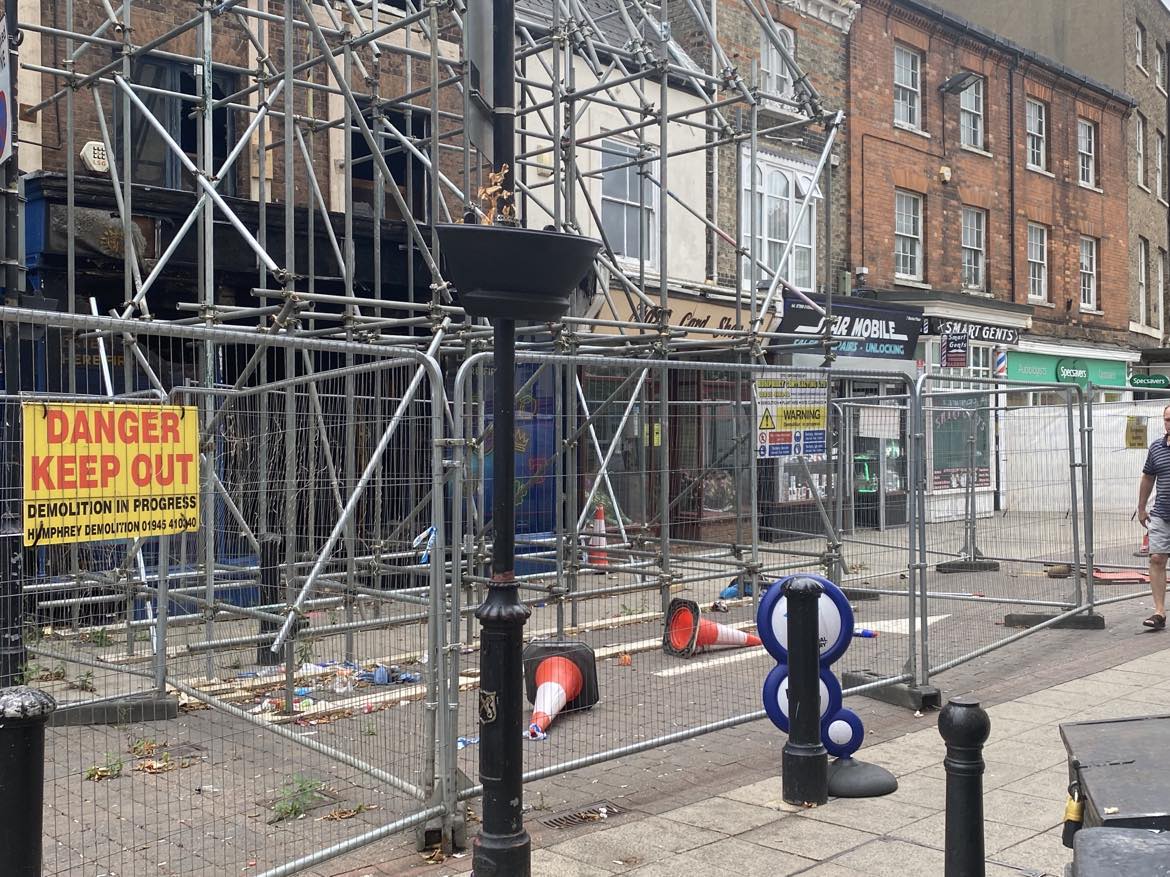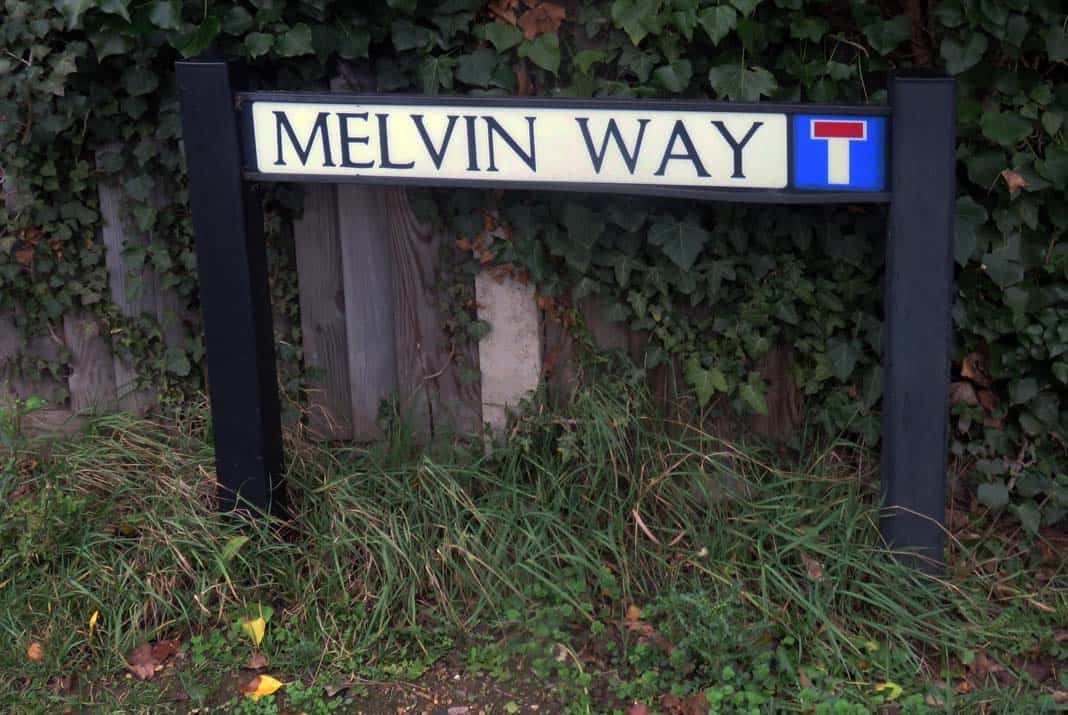Historic England has thrown a gigantic spanner in the works to early hopes of a fire ravaged historic town centre building in Wisbech being demolished any time soon.
It says “no clear and convincing justification has been provided” to support the level of demolition and rebuilding proposed.
Historic England -the government’s statutory adviser – wants considerably more evidence to justify demolition of the former gaming centre at 5 Market Place.
Sheila Stones, Inspector of Historic Buildings and Areas for Historic England, says the building is listed at grade II in recognition of its special architectural and historic interest.

Historic England is concerned, too, about the effectiveness of the façade retention scaffold “which does not appear to be sufficiently substantial”.
She said: “Historic England have serious concerns regarding the application on heritage grounds.”
In a letter to Fenland District Council, she said: “We urge your authority to ensure that the applicants appoint a conservation accredited structural engineer to comprehensively assess the condition of the building and determine the extent of significant historic fabric that can be retained and reused.
“Until that information is available, we are unable to provide our final response.
“We consider that the issues and safeguards outlined in our advice need to be addressed.”
Ms Stones said: “Whilst we are satisfied that our structural engineer has gained a good understanding of its current condition, due to its derelict state it is currently not feasible to gain the required detailed understanding of the structural condition, since access to the interior of the building itself is not possible.
“The application documents do not include a structural engineer’s report.
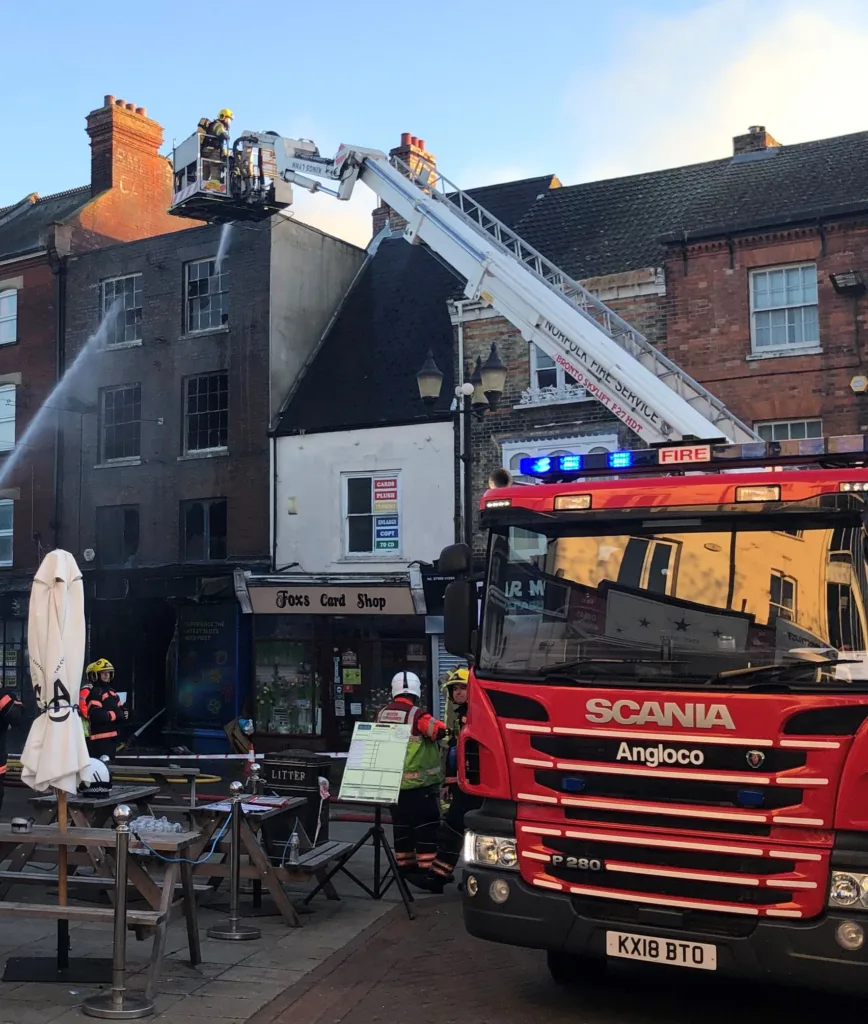
“It is therefore essential that a conservation accredited structural engineer be appointed at the earliest opportunity to adequately assess the significance of the historic fabric of the building and to seek its retention and reuse wherever possible.”
Listing the features that the owners say should be retained during demolition, Ms Stones says that whilst Historic England agree these features are important “we are of the view that the building’s significance is not restricted to these features only, together with its front elevation.
“We strongly urge your authority to ensure that you are certain of what the outcome will be if this initial phase is carried out and there is then a significant delay before further works commence.”
She said she visited the site on June 22 with Historic England’s structural engineer.
“His assessment regarding the current condition of the building, in light of the devastating fire damage that occurred in April 2022, is provided below,” she said.
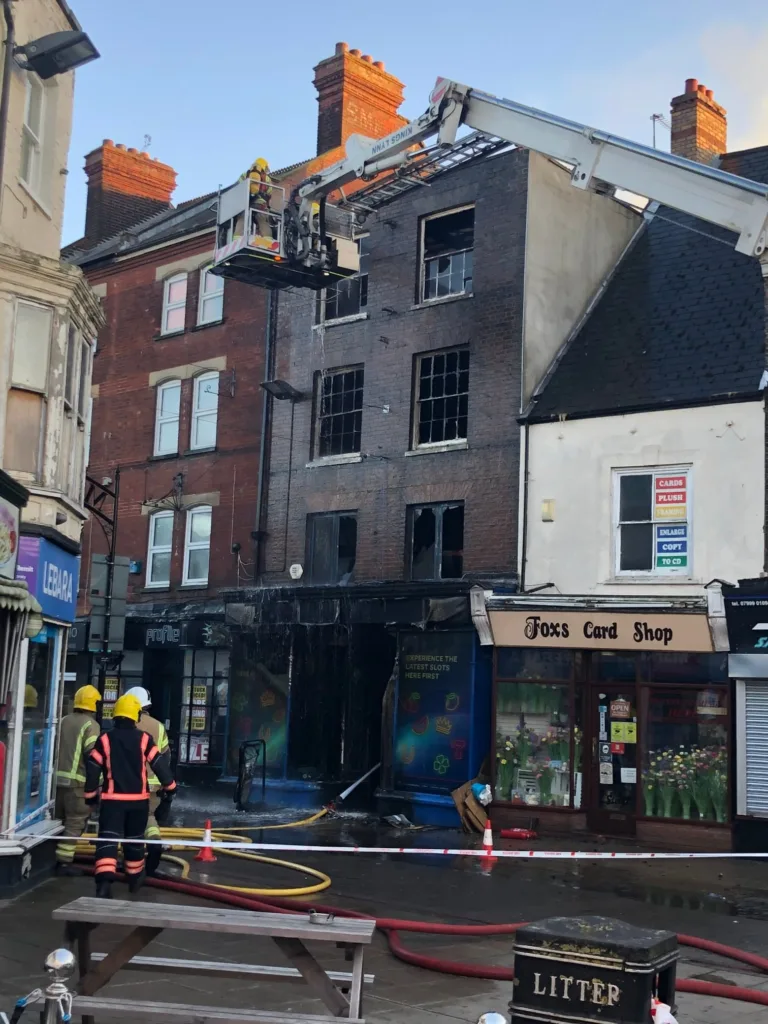
1: The damage caused by the 2022 fire is widespread and has potentially adversely affected a high proportion of the timber structural members.
Those timbers that were not burnt/excessively charred by the fire will have deteriorated by being exposed to rainwater/damp conditions over the last 14 months.
2: The masonry to the front elevation appears, from what can be seen from street level, to be in a reasonable condition.
No major fractures and/or bulges are evident, and the façade retention scaffold appears to be doing a reasonably satisfactory job.
3: How much restraint the remaining original structure behind is providing cannot be determined without altering the scaffold system to incorporate access platforms.
4: The rear elevation to the front block appears, from a distance, to be intact. However, there are a good number of sizeable openings above first floor level with what appear to be timber lintels.
5: The condition of the timbers cannot be confirmed at this time but given the prolonged exposure to rain/damp conditions, it can be expected that bearings will have softened/decayed.
6: Additionally, at first floor level there appears to be a large-span timber beam supporting the masonry above. This beam appears to be significantly charred to its full length; however, the depth of charring, and hence the beam’s residual section, is not known.
7: The structures to the rear of the site are in a similarly poor condition. Roof structures have completely been destroyed and the site covered in debris.
The most likely sequence of work would be to demolish unsafe structures to the rear of the site to allow debris clearance to commence.
8: Access through the front elevation is likely to be precluded due to concerns relating to the integrity of the suspended floor over the basement.
Localised clearance to the rear would then allow further inspections and assessments by the professional team on the scope of further works.
9: This does however require close supervision by the Local Authority to ensure they are content with the extents of demolition.
An agreed level of recording would also need to be in place prior to any works commencing.
10: Any commentary/assessment on the front elevation (or other sections to remain) is not currently included.
Some further preliminary assessment of the significant frontage and its potential for retention should therefore be undertaken.
Together with options for altering the façade retention scaffold to provide a greater degree of restraint and access to allow the potential removal of the floors etc behind.
11: The design of this façade retention scaffold must consider the presence of the basement/cellar and the effects of any surcharging of the ground adjacent to this from any kentledge required.
12: The local authority need to be confident in knowing what will remain of the building once this stage of works has been completed.
This should include any temporary weatherproofing to key retained elements, storage of materials, recording of building details etc all to allow the subsequent reconstruction of the building.
Ms Stones says national planning policy identifies that “heritage assets are an irreplaceable resource and should be conserved in a manner appropriate to their significance, so that they can be enjoyed for their contribution to the quality of life of existing and future generations”.
She also reminds Fenland Council that when considering the impact of a proposed development on the significance of a designated heritage asset “great weight should be given to the asset’s conservation (and the more important the asset, the greater the weight should be), irrespective of the level of harm”.
Ms Stones adds that part of the legislation also states that “any harm to, or loss of significance of a designated heritage asset should require clear and convincing justification”.
Where a development proposal will lead to less than substantial harm to the significance of a heritage asset, this harm should be weighed against the public benefits of the scheme, she said.
The council’s conservation officer has also produced a report which notes that there is “a strong feeling that the application is not sufficiently clear in its scope and intentions to meet the requirements of national legislation and policy regarding the safeguarding of listed buildings and conservation areas.
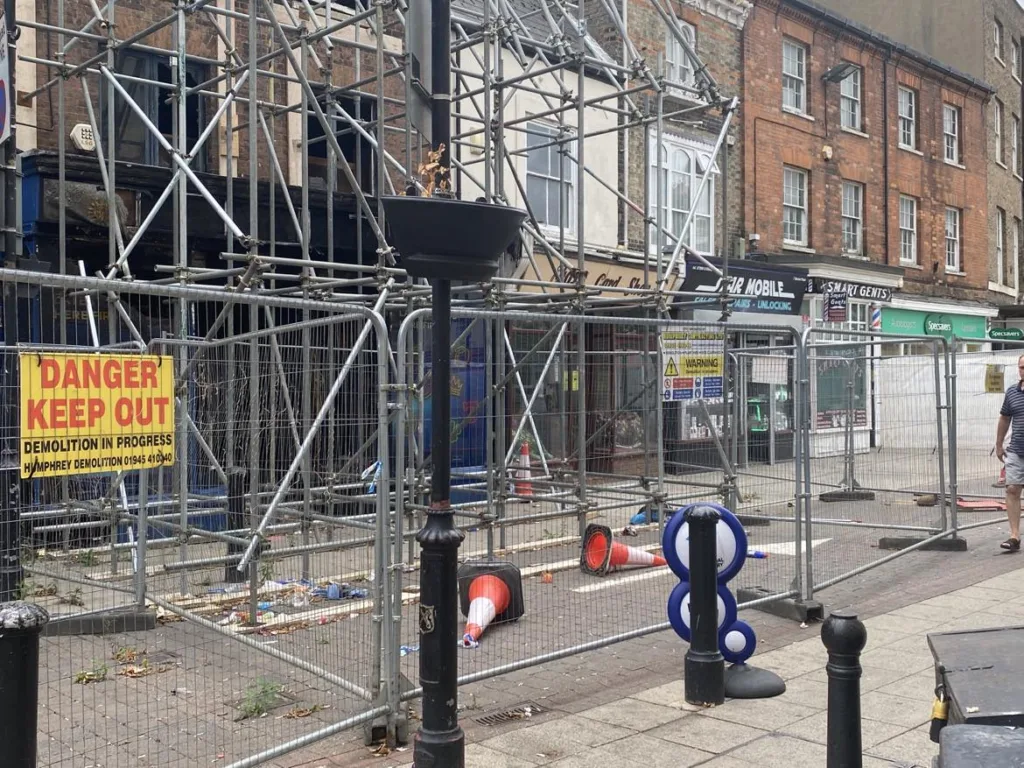
“It is therefore at odds with the obligations clearly set out in national legislation for which the LPA (local planning authority) are bound by.
“It should be made clear that the LPA are keen to see this application and a forward plan agreed as soon as possible owing to the disruption to the high street as well as the continuing decay of any salvageable materials whilst these elements continue to be exposed to the elements.”
An application to demolish what is left of 5 Market Place Wisbech is before Fenland District Council.
The owners are Indylby Investments and Biscuit Investments and the Lincoln based company has prepared a comprehensive package of proposals.
In one report to planners their agent notes that the fire “largely destroyed the interior and left the exterior structurally unsound”.
If agreed there is likely to be “potential for making a detailed record and identifies a limited number of items which could be recovered from the damaged building”.
A historic profile of the site will be produced to ensure memories remain long after demolition.
“There is a wealth of historic and more recent photographs available, both already within the project and in archive depositories,” says the report to council.
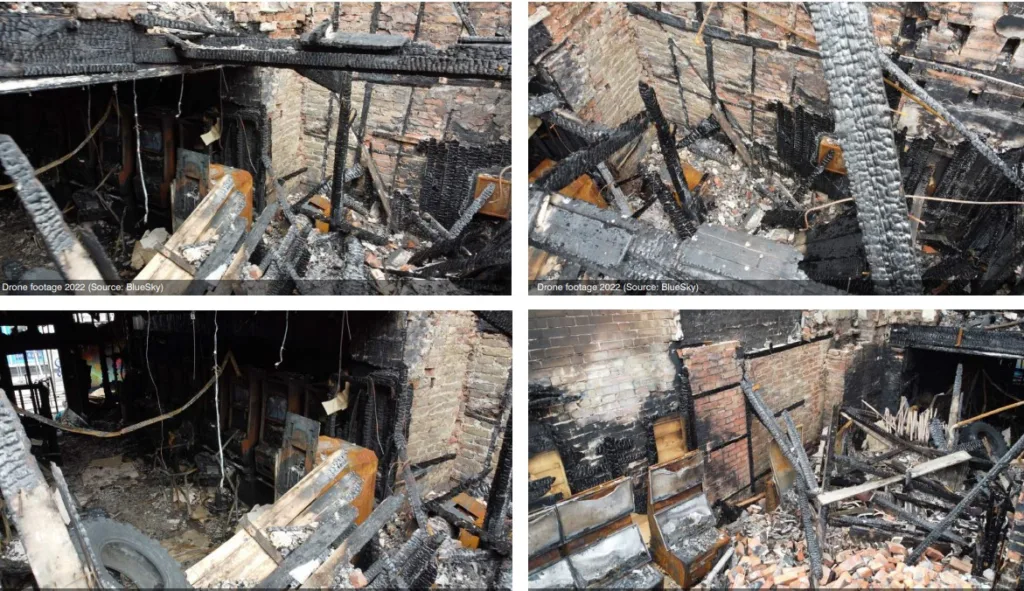
“Also available, and likely to prove invaluable, is drone video footage and still images taken shortly after the fire and so providing a resource of data that it would be difficult to achieve by another means given the health and safety considerations within the structure as it stands.
“Given the current state of the building however, i.e., fire damaged and with little surviving of the interior, work to date has consisted of as detailed as can be achieved observation of the structure from adjoining buildings, and of the front elevation as viewed around the supporting scaffolding.
“This has allowed moderately close inspection of what remains of the rear rooms of the front structure (including observations which will aid in phasing components of the building); however, it has not been possible to see into the front rooms at first, second and third floor level.”
The report says: “This phase of recording has generated almost 200 digital images which will contribute to the record as it progresses.
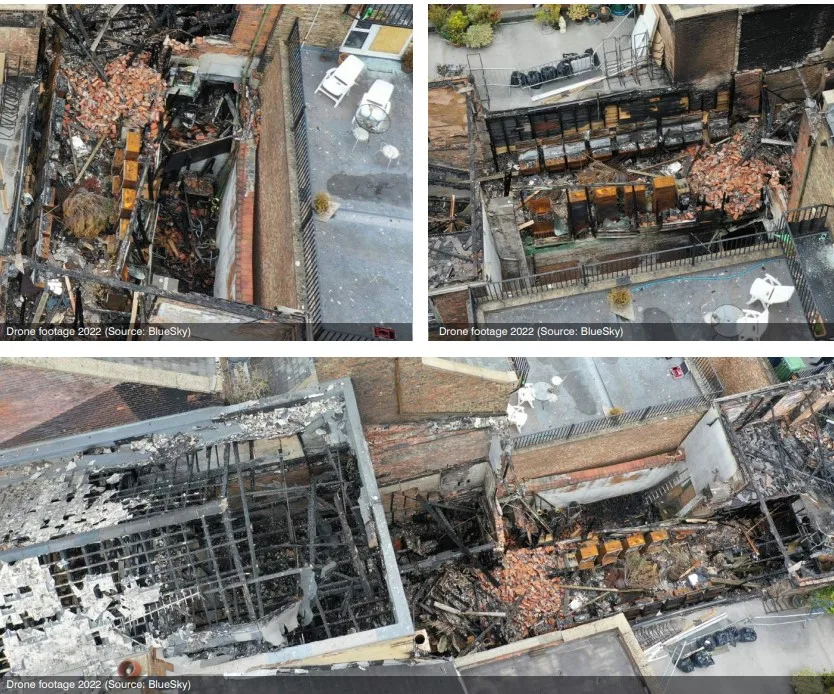
“Preliminary annotation of existing plans has also been carried out; both of these will be added to and built upon at the following stages of recording.
“The drone footage taken shortly after the fire is of good quality and tests have determined that it can be used to generate Capture From Motion photogrammetry, which will greatly increase the level of detail it will be possible to achieve.
“Together with the 2015 site plans and elevations a detailed record is achievable.”
The council has been told as that as far as is safe and practical a further assessment of the extent of loss of structural and decorative elements previously identified will be made.
This will also update the schedule of historic materials, fittings, and features to be salvaged for possible re-use.
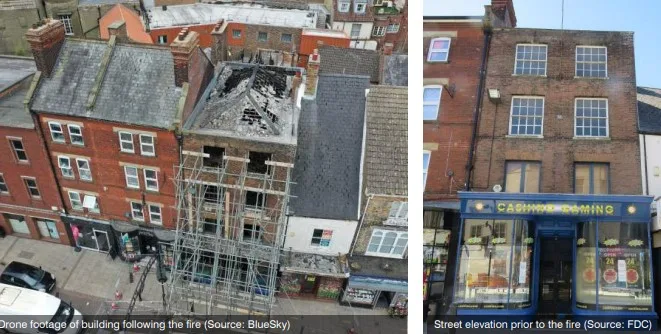
Under the heading of ‘possible items for recovery during clearance’ is the report sets out the following:
Known to have survived:
- Two cast iron fireplaces in the second and third floor level rear rooms (in reasonable condition):
- An iron pattress plate visible on the rear wall of the front structure (in good condition):
- The brass “PIANOES” plinth cap by the front entrance (in quite poor condition):
- Decorative 19th century shop front fittings include pierced iron work (in reasonable condition):
- The sole surviving 16-pane sash window frame at the 2nd floor front (condition unknown):
- The “good Adam style chimney piece” in the 2nd floor front room (condition unknown):
“Further items may become apparent during the clearance and stabilisation phase,” the report adds.
Fire crews from Cambridgeshire, Norfolk and Lincolnshire tackled the blaze at Market Place which housed a gaming centre, Cashino, in Wisbech.
The fire broke out at around 6.15pm on April 22.


